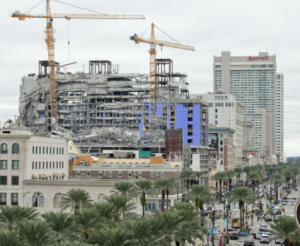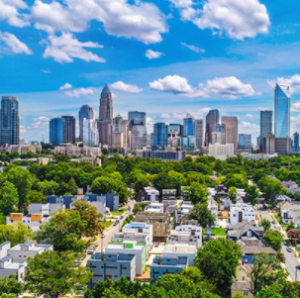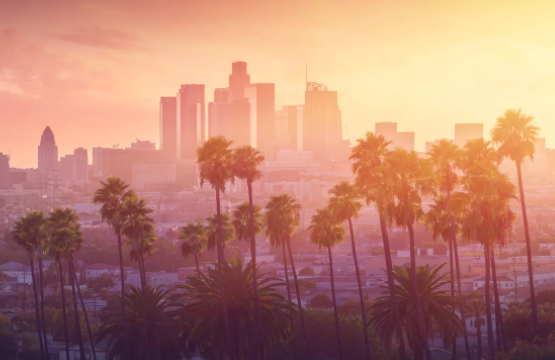California
California finds itself at the intersection of a continued COVID-19 surge but also surging prices. Regionally, almost all regions reported double-digit gains in sales from 2019 to 2020, and 37 of 51 counties in the state produced year-over-year home sales growth (California Association of Realtors). Additionally, 32 of those 51 counties had double-digit price increases. Finally, the state saw a near ~50% drop in active listings in 2020, meaning that what is affordable is going, going fast, and going for a lot of money. The median price mark in the state is now over $700K (World Property Journal), fueled by a demand for more space in light of coronavirus, as well as depleted inventory from wildfires that have ravaged the state two years in a row. Compounding inventory problems has led to prices skyrocketing, but as the remote working world takes shape, it will be interesting in hubs like LA and San Francisco see workers move out into more affordable pastures, looking to get more bang for their bucks.
New Mexico
While the pandemic has wreaked havoc on the majority of the nation, New Mexico’s market is actually benefitting from the housing demand. To start, New Mexico’s recovery from the Great Recession was delayed due largely to the fact that the impacts were felt later than most of the country. Even while housing prices are up over 8% over the last year, general affordability remains strong at just around $250K (Albuquerque Business First). In the luxury market, constituted as homes over $500K, there has been a staggering 85% increase in sales (Keller Williams); KW’s data indicates that buyers moving east from more expensive hotspots like LA or San Francisco are able to get more bang for their buck in New Mexico, while still maintain those high-paying jobs given the rise in work from home culture.
Arizona
Phoenix is potentially trending towards an affordability crisis for locals but still may present an opportunity for out-of-state investors. The activity has reached a rate not seen since 2007, immediately before the real estate bubble burst (Arizona State University). The median home price is approaching $400K, as prices have soared over 10% since 2019. However, for investors currently priced out of areas like NY where the median home price is $652K (Zillow), and inventory is virtually non-existent in the suburbs, Phoenix at this peak still presents an affordable option- provided that as fall moves into summer, it’s unemployment rate (which currently sits at around 10%, per the US Bureau of Labor Statistics) continues to decline. If not: investors, beware.
 Texas
Texas
Similar to other locations that are not partial to the extreme high-rise, high-density styles of NY, cities in Texas are seeing a surge in demand, rather than a mass exodus. Austin, San Antonio, Dallas, Houston, and Fort Worth all saw price increases in the summer of 3.5% – 6.5%, per CoreLogic. The cities provide a balance of socialization, as Texas did not have the phased, prolonged shutdown as in the Northeast, but at the moment, the demand does not seem to be outstripping affordability. About ~35% of homes sold in Q2 ranged in price from $200K-$299K (Texas Association of Realtors); with strong white-collar job markets, all these cities are possible investment opportunities, either for flips or term holds immediately given the affordability. There is also a huge opportunity to be had once the federal eviction prohibition lifts, as well: a significant amount of inventory is currently in forbearance, and will likely be even more affordable, as well as well-located in or near the above-noted cities, in early 2021.
Colorado
The same panic-buying of supplies that marked the early days of the pandemic in the US has bled into the housing market in Colorado, specifically in Denver. A report in July 2020 by CoreLogic indicates that Denver is one of the most overvalued in the country, predicted a 10% price declines by Spring, 2021. Even so, the Colorado Association of Realtors software program required a significant upgrade in order to keep up with incredible demand (Westword). As people worry about scarcity of availability and activity continues to set records, it is worth bearing out that inventory in August 2020 was 10% greater than the same period in 2019, further supporting CoreLogic’s hypothesis, and should be enough to deter investors for the foreseeable future.
Montana
Business Wire reports that Montana is ranking among the Top 5 states with declining affordability over the last year, likely spurred on by massive out-of-state investment. Though Montana is a non-disclosure state, when out-of-state quarantine ended, prices skyrocketed. From August 2019 to August 2020, the median price in Bozeman jumped $100K; a single-family home median sales price in Bozeman in August 2020 was $584K, spiking from $510K in July (Bozeman Daily Chronicle). With the surging demand, there may be an opportunity for buyers in the near future; 55% of homes in Bozeman are cost-burdened, meaning that over 30% of household income goes to housing expenses. With the increasing unemployment caused by COVID, if rent delinquencies and mortgage arrears begin to increase, investors should have a solid chance at scoring deals come early 2021.
Oklahoma
Despite national uncertainty, Oklahoma looks to lead the way on the rebound. Median prices for home sales are up ~10% year over year (The Oklahoman). Homebuilders have begun more than 650 new-build residential projects, the most since August 2013. The influx of inventory should keep prices low, but it’s unlikely that the state will see an influx of movement from out-of-state buyers.
 Louisiana
Louisiana
Louisiana is, in short, a mess. The state was facing financial and mortgage issues pre-coronavirus, and it seems that COVID-19 has only added to the burdens. Black Knight reports that Louisiana is among the top five states who are behind on mortgage delinquencies (rounding out the other four are, in no particular order: New York, New Jersey, Hawaii, and Mississippi). Compounding the issue is soaring affordability issues for new-builds, particularly in regards to lumber, as mills shut down in a tapped-out market, causing prices of materials to skyrocket (The Advocate). One non-COVID-related factor also impacting the state is Hurricane Laura, having caused between $8-12B worth of damage between Texas and Louisiana.
Alabama
Alabama’s market has shown itself to be among the strongest in the region despite COVID’s economic impacts. The Alabama Association of Realtors reports that home sales are up ~18.7% from 2019; and a staggering ~32% from May 2020 through early September 2020. A key factor in these numbers has to do with inventory, which has been on the decline in the state since February 2015 (Alabama Center for Real Estate). Even in coastal areas of the state, the surge continues: year-over-year, sales were down 49% in Mobile County, and 30% in Baldwin County (ACRE). One huge red flag looms over the good news, however: ACRE reports that Alabama is performing on-pace with other states in terms of mortgage delinquencies, and is one of the top-5 states in the US showing “improvement” in foreclosures, but the number remains high. Via AL.com, “… over the last six months, with 35.45% of foreclosures and delinquencies among active loans improving over that period.” Temporary relief directed by the federal government will help short-term, but moratoriums cannot last forever, meaning Alabama could soon find itself inundated with foreclosures in the next year or so.
Florida
Florida may be a COVID-19 hotspot, but that isn’t slowing down the market throughout the state. Northeast Florida is ranked as the fourth-most competitive housing market in the entire nation, via Realtor Magazine. Inventory is down ~32% from 2019 (Association of Realtors). With lower property costs and low state income taxes, much of the activity is being driven by people in the Northeast part of the nation, coming from hard-hit states like NY and NJ. In Central Florida cities like Orlando, inventory is at its lowest since 2005 (Orlando Regional Realtor Association). As Florida’s unemployment rate begins its gradual decline, investors who have made moves to acquire property in recent years will likely not see the same upheaval as their counterparts in other states; however, those who have not made any moves should wait out the market until federal eviction moratoriums expire and better deals are available.
 Maryland
Maryland
Baltimore and Maryland, writ large, are seeing huge gains in the real estate market. The number of homes sold is up 16%, and the median house price is up over 6.5% (The Baltimore Sun). The latter figure, along with the number of homes sold, represents a 10-year high for the entire region, including Baltimore City and the surrounding five counties. A 10-year low of inventory does not seem to be stifling sales just yet, as pending sales are also up 12%, a strong sign for the strength of the pending market. Maryland is also benefitting from an unemployment rate of under ~8%, which is less than the national average, via Bright MLS. That figure is key, as it may indicate a stronger market when eviction moratoriums come to an end.
DC
Despite its city roots, DC has not experienced the same exodus of some other metropoles but has rather increased the value in virtually all neighborhoods. Given that the primary occupation in DC is government/government adjacent jobs, there is less pandemic-related unemployment than other major cities; additionally, the city is more spread out, and generally eschews the extreme high-rise living format of places like NY and LA. As a consequence, the median price of a home is the District is now 10% higher than it was in July 2019, at $640K (Long & Foster). The data also shows that inventory is down 9% year over year, further illustrating that the high demand for the capital city is not going away any time soon.
Delaware
With a red-hot market, Delaware buyers are proving themselves to be quite savvy. Homes crossing the $1M threshold are still slow to move, whereas those less than $1M are moving in as short as a week in places like New Castle County. In order to keep pace with competing offers, which could create a bidding war, buyers are implementing escalation clauses, which automatically increases an initial offer from Buyer A in the event the Seller receives a higher offer from Buyer B, via Delaware Business Now. With proximity to NJ, Philadelphia, and DC, opportunities found in Delaware would prove lucrative for investors even when some semblance of normalcy returns to the economy, society, and the housing market.
Arkansas
The northwest part of Arkansas seems to thus far be immune to economic issues of the pandemic, boosted in part by the strength of the real estate sector. Prices are up 8.8% year over year from 2019, and over 35% from 2015, per the University of Arkansas. Demand is still the driving force for these changes; inventory is down 50% over the first 6 months of the year in 2020, as compared to this time last year. If this trend continues, it is possible that inventory will cause prices to rise further, possibly pricing people out locally- but is an opportunity for investors to look for term projects in the area.
Georgia
In Atlanta and the outlying suburbs, property values have skyrocketed over the better part of the last decade as flip projects led to the development of previously run-down neighborhoods to the benefit of upper-middle-class buyers. According to CBS, home prices are up over ~5%, while rents were up ~2.7% since February 2020. However, values could plummet when moratoriums on evictions expire. By the end of August, nearly three-quarters of a million residents sought unemployment. Zillow, predicting that this number will increase, combined with a high rate of foreclosure and evictions, is predicting that home values could drop as much as 3.6% over the next year in the area. Investors, steering clear due to high costs, would be smart to continue to stay away until the market settles.
Tennessee
The burden of lost revenue from the hospitality and tourism industry for Tennessee has not greatly impacted the real estate industry. A decade ago, 856 homes sole in Knoxville in the month of July; in 2020, in the middle of a pandemic, 2300 homes sold, via Coldwell Banker Wallace. Northeast Tennessee Association of Realtors indicates that home prices are up 13% in July from the same month in 2019. Low-interest rates and wide-open spaces are behind the push in the suburbs, but areas such as Nashville, where the average price of an SFR sits ~$379K, may see sales start to slow with the increase.
Kentucky
Kentucky is offering a snapshot of the eventual aftermath of post-moratorium life for both tenants and landlords. The CDC stepped into the fray in early September, warning that evictions could be detrimental to the ongoing national health crisis, and in a historically unprecedented move, banned evictions for tenants who are unable to pay rent due to COVID-19 hardship.** Governor Andy Beshear also issued executive orders to the same effect; however, the Supreme Court of Kentucky has entertained eviction proceedings for the better part of August as initial bans expired on July 25th. Consequently, a coalition of landlords in Northern Kentucky has filed suit against both orders, claiming in legal documents that they are facing mortgage and tax delinquencies, in addition to lack of income (WFPL 89.3). The efforts are a reminder that in these tough times, investors need to be wary as the pool of people who can utilize investment properties- either by purchasing new flips or renting term-projects- is decreasing as a consequence of COVID-19’s economic impact.
**NOTE: The CDC ban is effective through the end of 2020, and stipulates that tenants attempted/area receiving government assistance because of “substantial loss of household income,” and that eviction would lead to cohabitation with others, thereby increasing the chance for COVID-19 spread. (CDC.gov).
South Carolina
The Palmetto State’s affordability has not necessarily been a benefit to its homeowners over the course of the current pandemic. Despite the median house price being ~23% less expensive than the national average, ~9.5% of South Carolinians are in arrears on their mortgage, more than the national average of 8.5% (Ascent). The unemployment rate is improving to 8.6% (down from ~12% in March), particularly as the hospitality industry took a hard-hit from coronavirus (US Bureau of Labor Statistics). The state ranks 25th nationally on the housing hardship index (Bankrate). Bankrate forecasts that states with higher unemployment rates, such as South Carolina, will bear the worst burdens in 2021 as moratoriums expire, meaning that investors in metro areas with strong economic sectors might be able to score some deals if all the homework checks out.
 North Carolina
North Carolina
One of the major selling points of North Carolina investment has always been its rich university pool, allowing investors to take advantage of low prices whilst knowing a guaranteed rental base was available every fall, regardless of the broader economic situation. COVID has brought that safety net to a screeching halt. After just one week of classes, the University of North Carolina system, the largest in the state with ~30 undergrad and grad students (excluding faculty and staff), shut down in-person instruction and moved all learning to remote for the Fall, 2020 semester. This raises the likelihood that many students will be breaking leases for off-campus housing, leaving landlords holding the bag. Via the Wall Street Journal, “… nongovernment-backed mortgage bonds secured by student housing that are delinquent rose to a peak of 13.7% on July 1, according to Trepp LLC. That is up from 9.7% at the beginning of March and the highest figure since at least 2005.” With no vaccine and cold and flu season in full swing, it remains to be seen what UNC and the other NC-based universities will do for the Spring, 2021 semester- and likely leaving student housing investors scrambling.
Virginia
Northern Virginia’s already strong real estate sector, boosted by proximity to the Capital and the influx of the new Amazon HQ, has rebounded nicely from any COVID-19 impact. Long & Foster’s “Real Estate Market Minute Report” indicates that units sold saw a 15% increase in July 2020; adjacent Prince William County saw an increase of 12%. DC-area employers have easily transitioned to remote work access, and with the rise of homeschooling and lack of entertainment features in DC-proper, people are opting for the space of the suburbs. Now would be an opportunity for investors to take advantage of rising rents on properties in either county or test the market waters for selling, as homes are spending an average of just 18 days on the market throughout the state (Virginia Business). In totality, Virginia may have benefitted from COVID-19’s impact as pertaining to housing.


